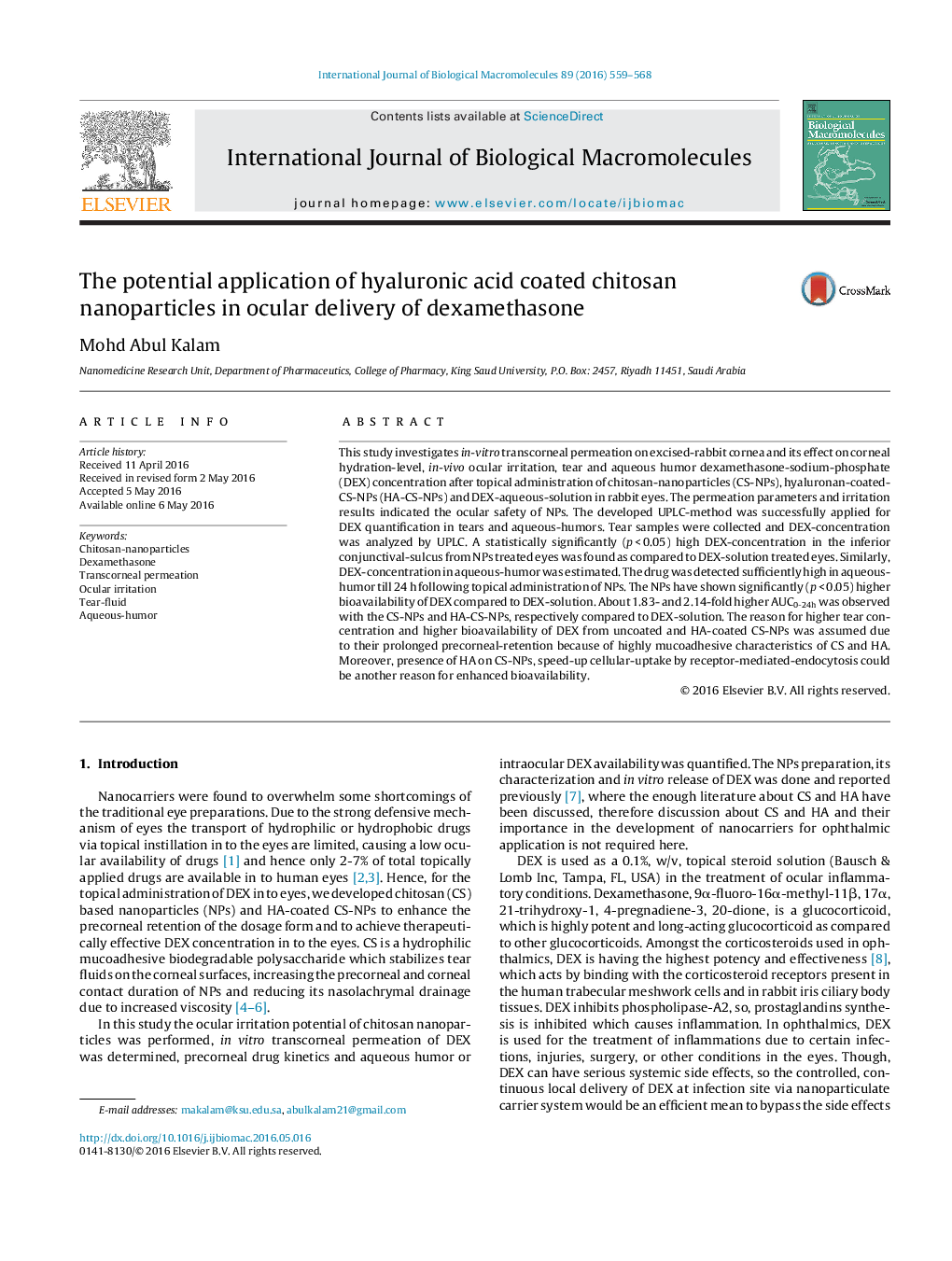| Article ID | Journal | Published Year | Pages | File Type |
|---|---|---|---|---|
| 1985764 | International Journal of Biological Macromolecules | 2016 | 10 Pages |
This study investigates in-vitro transcorneal permeation on excised-rabbit cornea and its effect on corneal hydration-level, in-vivo ocular irritation, tear and aqueous humor dexamethasone-sodium-phosphate (DEX) concentration after topical administration of chitosan-nanoparticles (CS-NPs), hyaluronan-coated-CS-NPs (HA-CS-NPs) and DEX-aqueous-solution in rabbit eyes. The permeation parameters and irritation results indicated the ocular safety of NPs. The developed UPLC-method was successfully applied for DEX quantification in tears and aqueous-humors. Tear samples were collected and DEX-concentration was analyzed by UPLC. A statistically significantly (p < 0.05) high DEX-concentration in the inferior conjunctival-sulcus from NPs treated eyes was found as compared to DEX-solution treated eyes. Similarly, DEX-concentration in aqueous-humor was estimated. The drug was detected sufficiently high in aqueous-humor till 24 h following topical administration of NPs. The NPs have shown significantly (p < 0.05) higher bioavailability of DEX compared to DEX-solution. About 1.83- and 2.14-fold higher AUC0-24h was observed with the CS-NPs and HA-CS-NPs, respectively compared to DEX-solution. The reason for higher tear concentration and higher bioavailability of DEX from uncoated and HA-coated CS-NPs was assumed due to their prolonged precorneal-retention because of highly mucoadhesive characteristics of CS and HA. Moreover, presence of HA on CS-NPs, speed-up cellular-uptake by receptor-mediated-endocytosis could be another reason for enhanced bioavailability.
